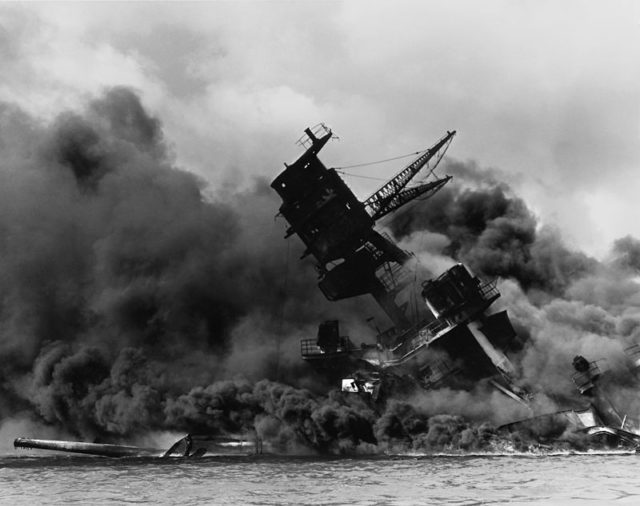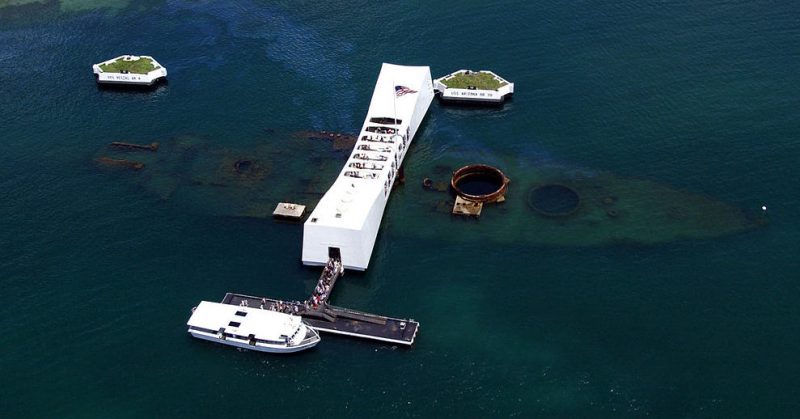Clearly, the deputy chief and photographer of the National Park Service’s Submerged Resources Center (SRC) has been touched by the latest images from the sunken battleship USS Arizona. The vessel has lain at the bottom of Pearl Harbor since December 7, 1941.
Brett Seymour, viewing recent images from remotely operated vehicles says the most striking find was a jacket hanging in an officer’s quarters.
It was clean, not covered in sediment, and hadn’t fallen off the hangar. It was there, standing proud.
The Arizona was part of the super-dreadnought class, and was commissioned in 1916. However, it was not actually active during the First World War, and would not see action during the Second World War until it met its sudden end.
In 1941, America was drawing ever closer to joining the conflict. The Allies were losing ground, and America entering the war would have turned the tide in their favor. However, after the enormous and unprecedented death toll of the Great War more than two decades earlier, the United States public were not in favor of intervening in foreign affairs.
All that was about to change. As the year came to an end, Japan launched an unprovoked strike against Pearl Harbor. They made no formal declaration of war, and gave no warning of their intention to open hostilities. One day America believed itself to be a nation at peace, and the next its territory was being attacked by war ships, submarines and more than 400 Japanese aircraft.
During the ensuing battle, the United States lost over 2000 military personal, and saw numerous ships destroyed and damaged. One of them was the USS Arizona, which went down after a bomb hit the powder magazine. The resultant explosion caused the ship to sink, and cost the lives of 1177 officers and crewmen.
Seymour was part of a team which was comprised of the NPS and National Geographic photographers that for ten days documented the interior first and second decks of the 608-foot long battleship.
The ROV, custom built by Marine Imaging Technologies and the Woods Hole Oceanographic Institute, amassed scientific data such as levels of dissolved oxygen, pH, and salinity in addition to samples of oil, microbiology, and sediment. A Harvard University lab will analyze the results for the next half-year.

The battleship is the most studied shipwreck in the world. Initially mapped in the 1980s, the Arizona’s lifespan and condition were analyzed, but the ship’s interior had to wait for technology to improve, National Geographic reported.
Seymour said the low levels of dissolved oxygen in the water, in addition to the protective cover provided by marine life, helped preserve the contents and the ship. Much of the water is over 80 percent dissolved oxygen which can quickly decay a vessel. But as the ROV went lower and lower, the levels of dissolved oxygen kept dropping precipitously. The oxygen level in some cabins on the third deck was only four percent.
They’ve always suspected that would account for the preservation. Now they have the science to understand why.
The next stage is to penetrate under the third deck. When that occurs, said Seymour, the questions remains that goes back to the park service’s first mission statement: how to leave the area unsoiled for the future? How can the Arizona be protected, interpreted and preserved without doing harm?
The Arizona has a soul. It’s the only shipwreck in his 20-year career and 400 dives where a person can feel an emotional, personal connection. The vessel is not just a shipwreck. It’s THE shipwreck. It’s a powerful and immediate link to the past – a monument to the tragic events of December 7, 1941, and the brave people who gave their lives that day. It’s the USS Arizona.
